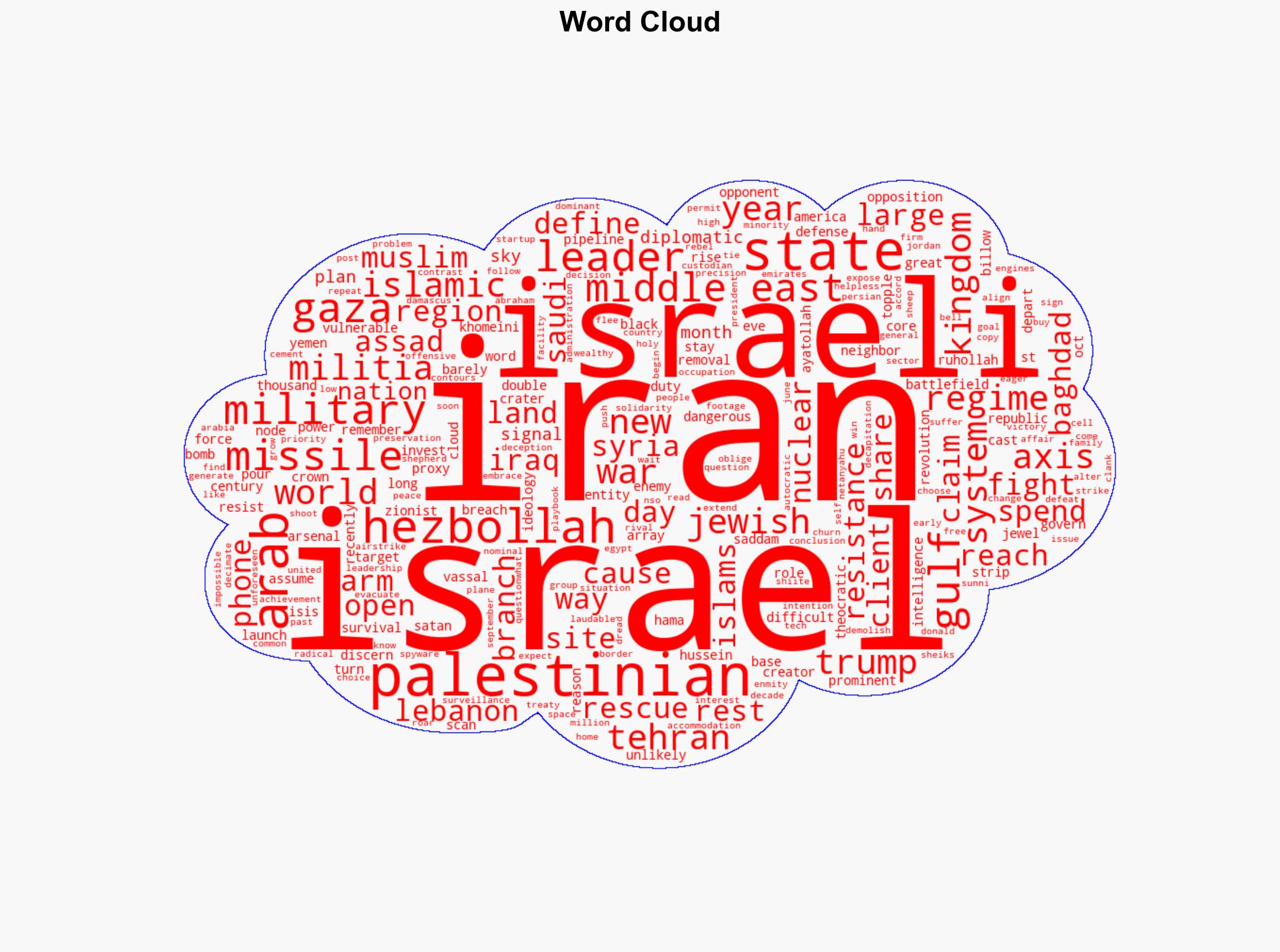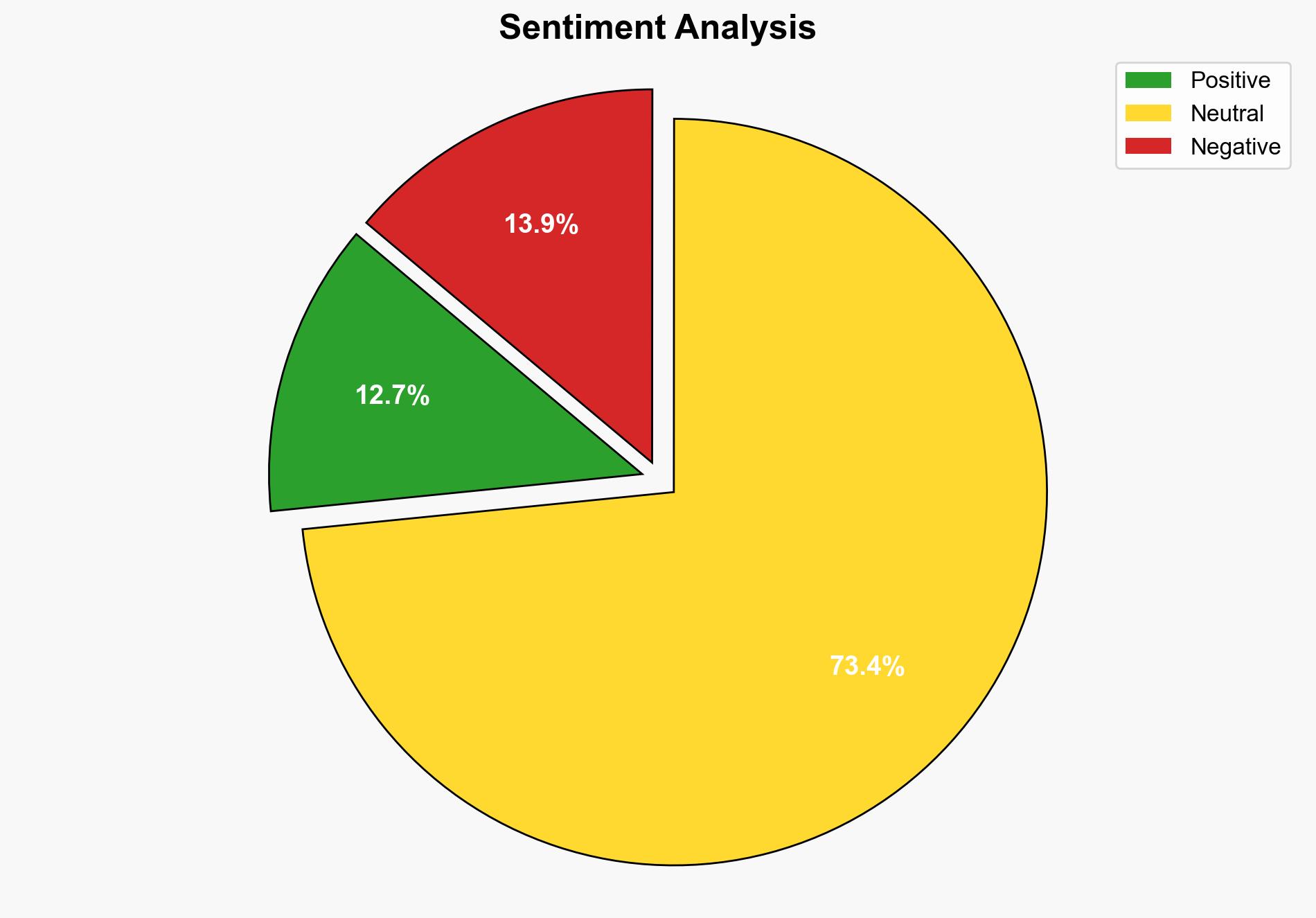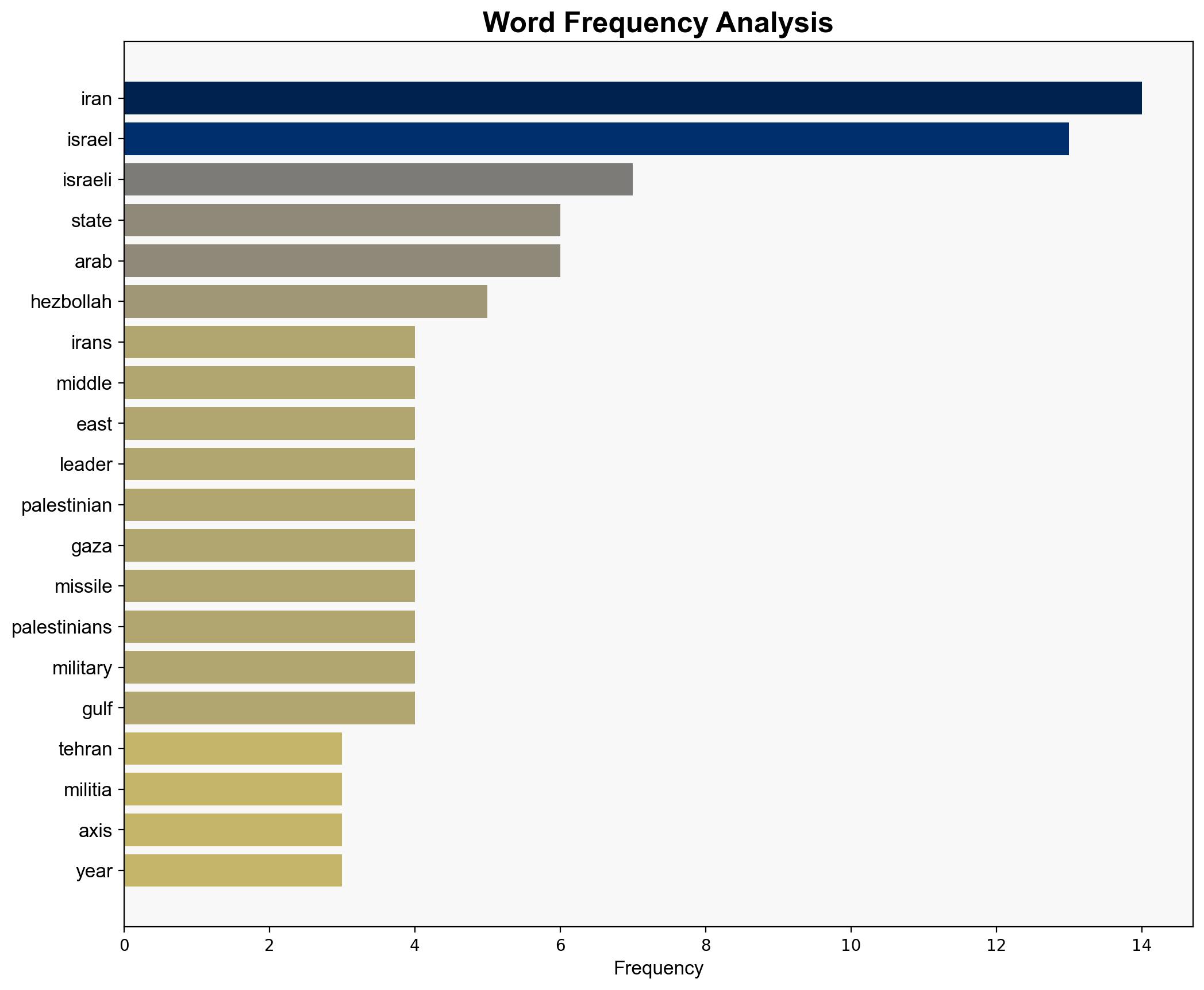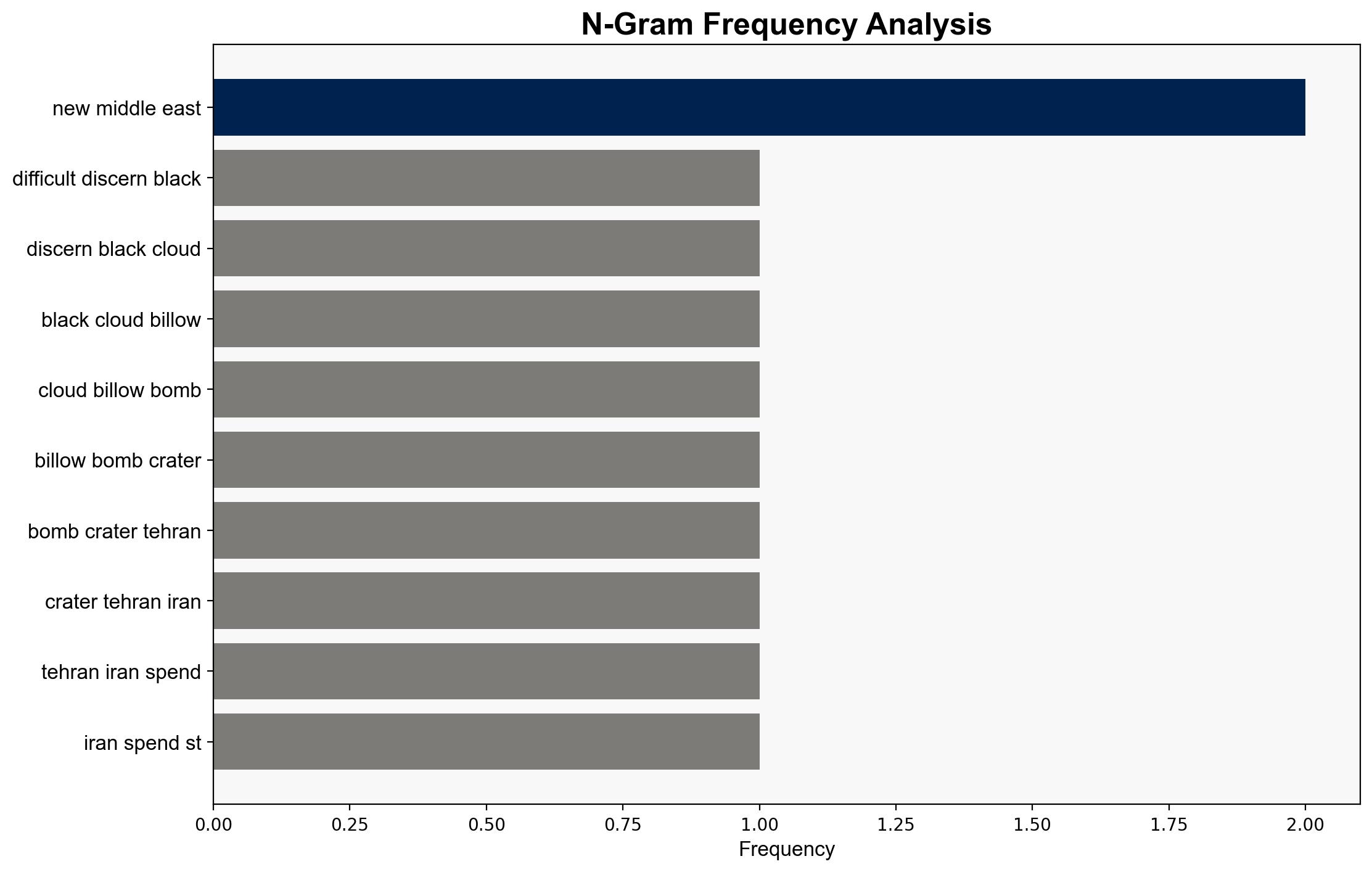A New Middle East Is Unfolding Before Our Eyes – Time
Published on: 2025-06-19
Intelligence Report: A New Middle East Is Unfolding Before Our Eyes – Time
1. BLUF (Bottom Line Up Front)
The Middle East is experiencing significant geopolitical shifts, primarily influenced by Iran’s expanding influence and strategic maneuvers. Key findings indicate Iran’s use of proxy forces and alliances to extend its reach, posing a direct challenge to Israel and altering regional dynamics. Recommendations include bolstering diplomatic efforts to stabilize the region and enhancing intelligence cooperation to monitor Iran’s activities.
2. Detailed Analysis
The following structured analytic techniques have been applied to ensure methodological consistency:
ACH 2.0
Iran’s strategic objectives appear focused on consolidating regional power through proxy networks, with intentions likely aimed at countering Israeli influence and securing its ideological leadership in the Muslim world.
Indicators Development
Monitoring of digital communications and travel patterns suggests increased coordination among Iran-backed groups, indicating potential operational planning against Israeli interests.
Narrative Pattern Analysis
Iran’s ideological narratives continue to resonate, particularly within Palestinian factions, suggesting a sustained recruitment drive and potential for incitement against Israel.
3. Implications and Strategic Risks
The evolving alliances, such as the Abraham Accords, present both opportunities and risks. While they offer a counterbalance to Iran’s influence, they also risk escalating tensions if not managed carefully. Cyber and military domains remain vulnerable to Iranian retaliation, potentially destabilizing the region further.
4. Recommendations and Outlook
- Enhance intelligence-sharing frameworks with regional allies to preempt Iranian maneuvers.
- Strengthen diplomatic channels to support peace initiatives and reduce the likelihood of military escalation.
- Scenario-based projections:
- Best Case: Successful diplomatic engagements lead to regional stability and reduced hostilities.
- Worst Case: Escalation of military conflicts involving Iran and its proxies, destabilizing the region.
- Most Likely: Continued low-intensity conflicts with periodic escalations, requiring sustained diplomatic efforts.
5. Key Individuals and Entities
Ayatollah Ruhollah Khomeini, Benjamin Netanyahu, Donald Trump, Hamas, Hezbollah
6. Thematic Tags
national security threats, cybersecurity, counter-terrorism, regional focus




